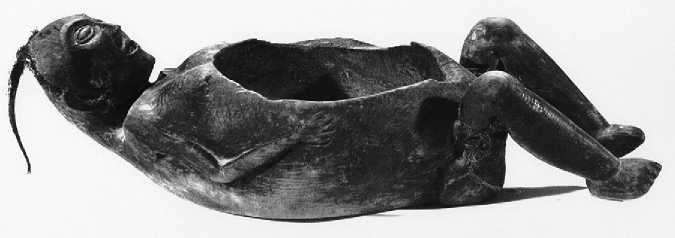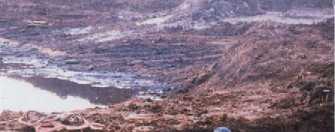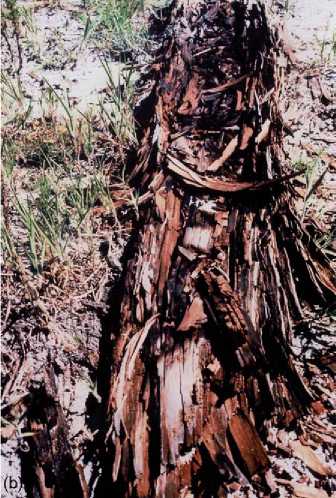Waterlogged sites should not be excavated without adequate funds for analysis, long-term storage

Figure 5 Wooden container realistically carved in the shape of a reclining man from the Ozette Village site. Copyright Ruth Kirk.


Figure 6 (a) An AD 900 canoe from Clay County, Florida; (b) the same canoe 2 years later after being placed in a holding pond that went dry during drought conditions. Courtesy of Barbara A. Purdy.
Facilities, and the services of a conservator knowledgeable about preservation techniques for wood, plant and body parts, and bone. Forty years of experimentations with polyethylene glycol (PEG) have shown that this product, using the proper combinations of molecular weights, sometimes in conjunction with freeze drying, successfully preserves ancient wood in most cases. But there are many variables to be considered and examined that are not within the scope of this article. A fixative such as formalin acidic alcohol (FAA) prevents the further decomposition of stems, seeds, and other plant parts. Bone usually does not succumb as drastically to deterioration as botanical specimens when removed from a waterlogged context. Nevertheless, a mixture of a polyvinyl acetate emulsion and water is recommended as a precautionary treatment.
Archaeologists working at waterlogged sites are fortunate that The International Council of Museums (ICOM) has an active and productive Working Group on Wet Organic Archaeological Materials (WOAM).




 World History
World History









